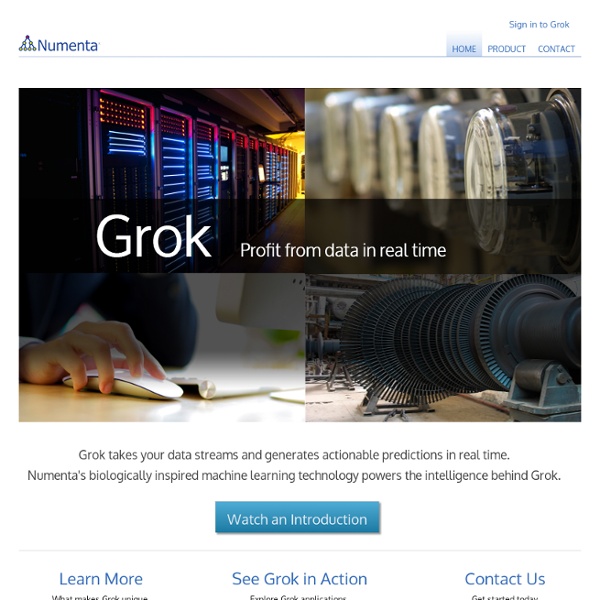



Open Journal of Databases Open Journal of Databases (OJDB) provides a platform for researchers and practitioners of databases to share their ideas, experiences and research results. OJDB publishes following four types of scientific articles: Short communications: reporting novel research ideas. The work represented should be technically sound and significantly advancing the state of the art. Short communications also include exploratory studies and methodological articles.Regular research papers: being full original findings with adequate experimental research. They make substantial theoretical and empirical contributions to the research field. OJDB welcomes scientific papers in all the traditional and emerging areas of database research. Topics relevant to this journal include, but are NOT limited to:
Machine Learning - Stanford University Logic+Emotion In the beginning, there were products and services, and some were good. Fewer became trusted brands, but those that did enjoyed unquestioned loyalty supported by a simple yet effective marketing engines built to reach people in mass quantity. The formula worked for decades. An empire was built on the shoulders of Madison Avenue and expanded globally. More recently, technology has had it’s own evolutionary process which it’s still going through. Responsive DesignToday, digital design and development is often done leveraging the “agile” method of development, which favors smaller, cyclical bursts of development and rapid testing. “Content Marketing” Is Disrupting Modern Day Brand BuildingCMOs, chief digital officers and brand managers across many organizations are currently grappling with the notion of content used in the context of marketing—inherently they understand that their customers value content, consume it, create it, and share it—and they want in on the action.
Top 12 CSS Frameworks and How to Understand Them Most designers would have heard of the term ‘CSS Frameworks’, for those who don’t know or aren’t sure, here is a brief description from: Wikipedia: “A CSS framework is a library that is meant to allow for easier, more standards-compliant styling of a webpage using the Cascading Style Sheets language. Just like programming and scripting language libraries, CSS frameworks package a number of ready-made options for designing and outlaying a webpage.” Sounds great doesn’t it, something that is going to make designing and developing a website that little bit easier. It will take away the repeating of the same old boring stuff and if you write your framework correctly you will be guaranteed your code will meet W3C recommendations. That will leave you plenty of time to design your site, the fun side of the job! There is a lot more to CSS Frameworks than I have written here, but I am not going to bore you, download them and try them out. 12 of the best CSS Frameworks